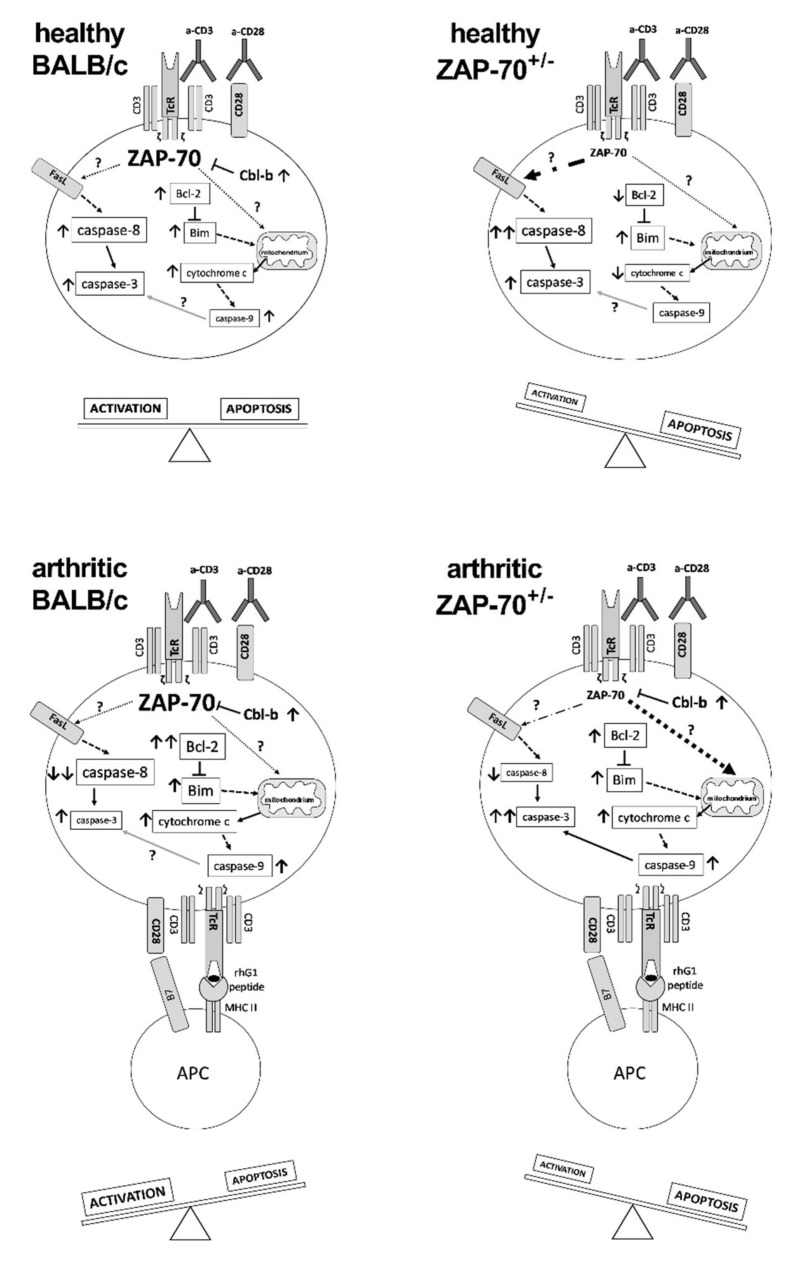Figure 5.
A putative model of the alterations in the activation and apoptotic pathways of T cells resulting from the partial deficiency of ZAP-70. In T cells of healthy BALB/c mice levels of Cbl-b, Bcl-2, Caspase-3 and-9 increased as a result of anti-CD3/anti-CD28 activation, leading to a balance between apoptotic and activation processes. T cells of healthy ZAP-70+/− mice showed increased expression of Bim, Caspase-3 and -8 after stimulation, with levels of Bcl-2 and cytochrome c decreasing, thus the balance shifted towards apoptosis predominantly through the extrinsic pathway. In arthritic BALB/c mice T cells showed elevated levels of Cbl-b, Bcl-2, Bim, Cytochrome C, Caspase-3 and-9 and decreased levels of Caspase-8 which shifted the cells towards activation. In T cells of arthritic ZAP-70+/− mice the amount of Cbl-b, Bcl-2, Bim, cytochrome c, Caspase-3 and-9 increased following stimulation, leading to a shift towards apoptosis of T cells via the mitochondrial pathway. Font size of molecule names refers to their levels detected by Western blotting (see Figure 4), whereas arrows indicate changes in expression levels in comparison to the corresponding unstimulated samples. Dot dash- or dotted arrows show the putative link to the extrinsic-, or death-receptor-independent apoptosis pathways.

